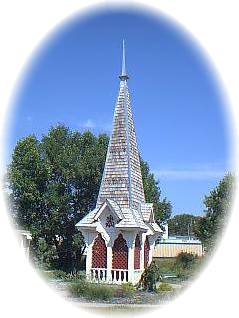
The Charles H. Morrill Homestead, listed on the National Register of Historic Places, is located on a picturesque site near the Big Blue River. The original house, a one-story frame dwelling, was built in 1872 and exhibits subtle Italianate detailing in its design. The one-and-one-half-story log house, finished in 1901, was built by Ludwig Rudeen. The Morrills were among the first homesteaders arriving in the area in 1869.
In 1879, Morrill became Governor Albinus Nance's private secretary, and in 1904 he was elected Republican national committeeman. He was elected regent of the University of Nebraska in 1889, serving as president of the Board of Regents from 1892 to 1902. In the 1890s he and Dr. E.H. Barbour, professor of geology, initiated yearly geological and paleontological expeditions into all parts of the state. These expeditions gathered the initial collections of the University of Nebraska Museum. Later in life Morrill liberally financed expeditions and maintenance of the university's collections.
When the university museum building was erected in 1927, it was named Morrill Hall. A county in western Nebraska, organized in 1908, and a community northwest of Scottsbluff, Nebraska, also bear Morrill's name.
